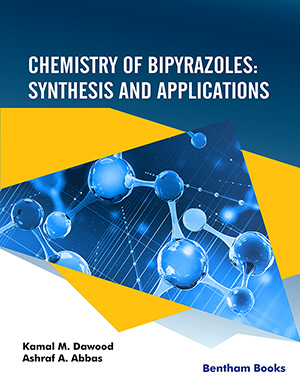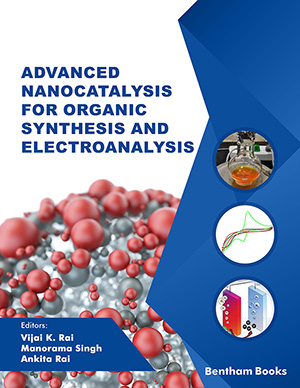
Abstract
Evidence suggests that discovery of anti-inflammatory agents is driven by the search for bioactive compounds from natural products and synthetic chemicals. Triterpenoids are a wide-spread group of natural products and a polycyclic secondary metabolite in many terrestrial plants. In addition, their anti-inflammatory activity and action as immunomodulators has been demonstrated in many studies. Because of their various advantages, triterpenoids are used as a platform or target of drug development in wide-range applications against inflammatory diseases. Therefore, the modification of a variety of triterpenoids in structure from the natural origin has been done for optimization of bioactivity, and some semisynthetic analogs are suggested to be potent anti-inflammatory triterpenoids. The aim of this review is to illustrate the anti-inflammatory effects of several triterpenoids originating from natural products and chemical synthesis, and to analyze the structural activities and relationships between the different types of triterpenoids. These triterpenoids include avicins, boswellic acid, celastrol, diosgenin, escin, ginsenosides, glycyrrhizin, lupeol, oleanolic acid, platycodon D, saikosaponins, ursolic acid, 2-cyano-3,12-dioxooleana-1,9(11)-dien-28-oic acid (CDDO), and their derivatives. This review provides a summary of recent advances of treiterpenoids and discusses further advances on the anti-inflammatory effect.
Keywords: Anti-inflammatory effect, triterpenoid, natural product, synthetic chemical.
Mini-Reviews in Organic Chemistry
Title:Anti-Inflammatory Effects of Triterpenoids; Naturally Occurring and Synthetic Agents
Volume: 11 Issue: 3
Author(s): Gil-Saeng Jeong and Jong-Sup Bae
Affiliation:
Keywords: Anti-inflammatory effect, triterpenoid, natural product, synthetic chemical.
Abstract: Evidence suggests that discovery of anti-inflammatory agents is driven by the search for bioactive compounds from natural products and synthetic chemicals. Triterpenoids are a wide-spread group of natural products and a polycyclic secondary metabolite in many terrestrial plants. In addition, their anti-inflammatory activity and action as immunomodulators has been demonstrated in many studies. Because of their various advantages, triterpenoids are used as a platform or target of drug development in wide-range applications against inflammatory diseases. Therefore, the modification of a variety of triterpenoids in structure from the natural origin has been done for optimization of bioactivity, and some semisynthetic analogs are suggested to be potent anti-inflammatory triterpenoids. The aim of this review is to illustrate the anti-inflammatory effects of several triterpenoids originating from natural products and chemical synthesis, and to analyze the structural activities and relationships between the different types of triterpenoids. These triterpenoids include avicins, boswellic acid, celastrol, diosgenin, escin, ginsenosides, glycyrrhizin, lupeol, oleanolic acid, platycodon D, saikosaponins, ursolic acid, 2-cyano-3,12-dioxooleana-1,9(11)-dien-28-oic acid (CDDO), and their derivatives. This review provides a summary of recent advances of treiterpenoids and discusses further advances on the anti-inflammatory effect.
Export Options
About this article
Cite this article as:
Jeong Gil-Saeng and Bae Jong-Sup, Anti-Inflammatory Effects of Triterpenoids; Naturally Occurring and Synthetic Agents, Mini-Reviews in Organic Chemistry 2014; 11 (3) . https://dx.doi.org/10.2174/1570193X1103140915111703
| DOI https://dx.doi.org/10.2174/1570193X1103140915111703 |
Print ISSN 1570-193X |
| Publisher Name Bentham Science Publisher |
Online ISSN 1875-6298 |
Call for Papers in Thematic Issues
Active Alkaloids: Structure, Mechanism of Action, Chemical Synthesis, and Biosynthesis
The scope of this topic encompasses the structure, mechanism of action, chemical synthesis, and biosynthesis of active alkaloids. Alkaloids, a class of nitrogen-containing organic compounds with alkaline properties, originate from a diverse array of sources. Many alkaloids exhibit significant biological activities and serve as key constituents in numerous medicinal plants. ...read more
Advancement in Petroleum Geochemistry
The scope of the thematic issue on advancements in petroleum geochemistry encompasses a broad range of cutting-edge research and technological innovations. This issue aims to highlight the latest developments in understanding the chemical and physical properties of petroleum and its geological formations. Key areas of focus include: Unconventional Resources: Exploring ...read more
Advancements in Synthesis of Bioactive Compounds
This thematic issue focuses on elucidating advanced synthetic strategies for bioactive compounds, with the primary objective of deepening understanding of the rational design and construction of target molecules. The exploration encompasses a diverse range of techniques, established name reactions, and cutting-edge synthetic methodologies. Specifically, the issue delves into the synthesis ...read more
Advances in Sustainable Synthesis and Applications of Cyclic Carbonates: From Green Chemistry to Advanced Materials
Cyclic carbonates have become a focus of attention because of their potential in sustainable chemistry, energy solutions, and advanced materials. Recent breakthroughs in their synthesis emphasize the use of CO₂ as a renewable feedstock, which is a step toward reducing carbon emissions. New catalytic processes, including both traditional metal catalysts ...read more
Related Journals
 62
62
- Author Guidelines
- Graphical Abstracts
- Fabricating and Stating False Information
- Research Misconduct
- Post Publication Discussions and Corrections
- Publishing Ethics and Rectitude
- Increase Visibility of Your Article
- Archiving Policies
- Peer Review Workflow
- Order Your Article Before Print
- Promote Your Article
- Manuscript Transfer Facility
- Editorial Policies
- Allegations from Whistleblowers
Related Articles
-
Gas Chromatography-Mass Spectrometry (GC-MS) Analysis of <i>Scaphium Affine</i> Seed Extract and Assessment of Its Anti-hemorrhoidal Efficacy
Anti-Inflammatory & Anti-Allergy Agents in Medicinal Chemistry A Case of Hepatotoxicity Induced by Adulterated “Tiger King”, a Chinese Herbal Medicine Containing Sildenafil
Current Drug Safety MicroRNAs in Prostate Cancer Following Radiotherapy: Towards Predicting Response to Radiation Treatment
Current Medicinal Chemistry Dementia Etiologies and Remedies in Traditional Persian Medicine; A Review of Medicinal Plants and Phytochemistry
Current Drug Metabolism The Healing Effects of Spices in Chronic Diseases
Current Medicinal Chemistry Phase I Clinical Trial of Exherin (ADH-1) in Patients with Advanced Solid Tumors
Current Clinical Pharmacology Dual-energy Spectral CT Imaging of Primary Anorectal Malignant Melanoma: A Case Report
Current Medical Imaging <i>Fernandoa Adenophylla</i>: A review of its Phytochemistry, Traditional and Pharmacology use and Future Aspects
Current Traditional Medicine A Meta-Analysis of Proteomic Blood Markers of Colorectal Cancer
Current Medicinal Chemistry Clinical Evidence of Herb-Drug Interactions: A Systematic Review by the Natural Standard Research Collaboration
Current Drug Metabolism A Comprehensive Review on Biological and Chemical Diversity in <i>Aesculus</i> L. Genus (Sapindaceae)
Current Traditional Medicine Chemical and Biological Aspects of the Genus Verbesina
The Natural Products Journal A Review on the Phytochemicals, Ethnomedicine Uses and Pharmacology of Ficus Species
Current Traditional Medicine Screening of Anti-Histaminic Activity of Fagonia Schweinfurthii Hadidi in Guinea Pig Ileum and Formulate Anti-Histaminic Syrup
The Natural Products Journal Adynamic Ileus Induced by Varenicline
Current Drug Safety Therapeutic Biology of Jatropha curcas: A Mini Review
Current Pharmaceutical Biotechnology ZnO Applications and Challenges
Current Organic Chemistry Implication of Nanofibers in Oral Drug Delivery
Current Pharmaceutical Design Clinical Profile and Risk Factors of Central Serous Chorioretinopathy in Al- Ain, United Arab Emirates
New Emirates Medical Journal Pharmacological Approaches to Chronic Spinal Cord Injury
Current Pharmaceutical Design
























